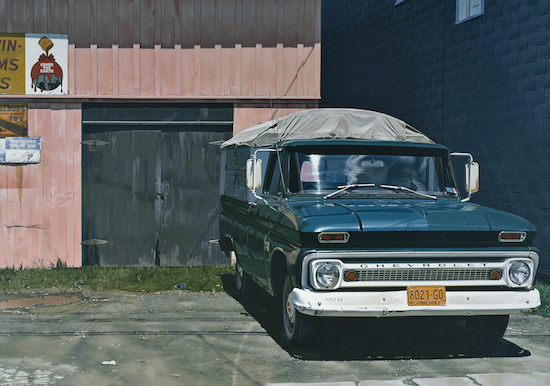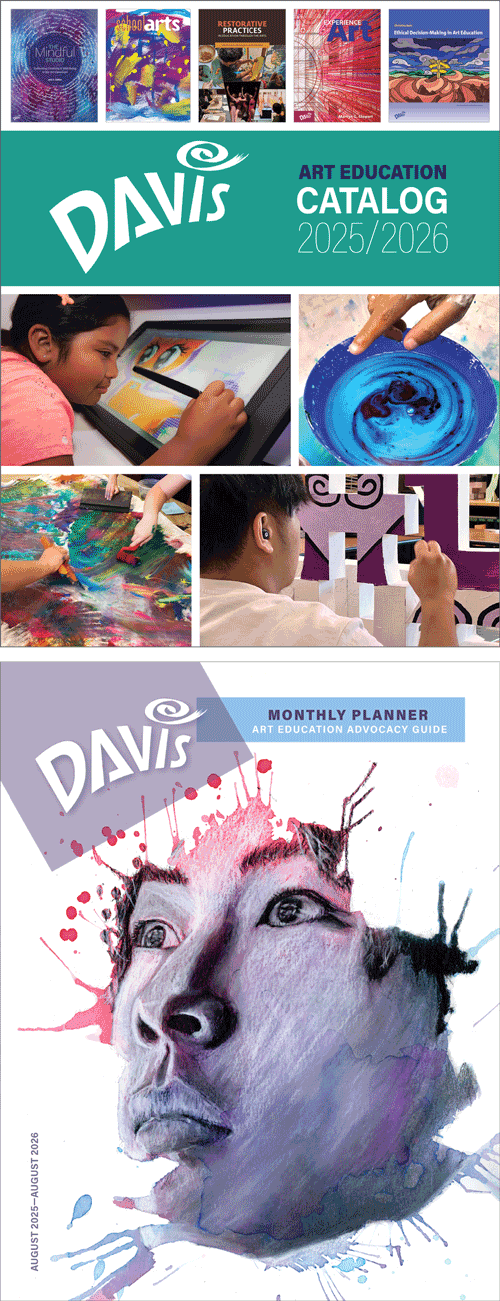Artist Birthday: Ralph Goings
The Photorealism movement, which evolved during the late 1960s as a counterpoint to the pervasive Minimalism, Conceptualism, and abstraction in American art, blossomed fully during the 1970s. Into the 21st century, Photorealism is still a very strong presence in contemporary art, particularly in American art.
Artist birthday for 9 May: Ralph Goings (1928–2016, United States)
Ralph Goings was a Photorealist painter who specialized in classic American automobiles.
 |
| Ralph Goings, Sherwin Williams Chevy, 1975. Oil on canvas, 111.5 x 157.5 cm. The Museum of Modern Art, New York. © 2025 Artist or Estate of Artist. (MOMA-P1042) |
Unlike Photorealist painter Richard Estes (born 1932) who cobbled together photographs of a location that created an "edited" version of a scene, Goings worked immediately off of a photograph projected on his canvas or paper. He described it as a mechanical process, much like the manual technique he developed for minimizing brush strokes on the painting's surface in order to heighten the illusion of the painting being a photograph. His images of pick up trucks are the subject matter that catapulted Goings to prominent recognition in the art world. He consciously avoided any personal involvement in the composition so that the painting could be as close to the actual subject as possible.
The penchant for an acutely observed brand of realism has been present in all periods of American painting. From the earliest years of the colonies, American art patrons preferred down-to-earth depictions of subject matter with which they were familiar rather than any esoteric, philosophical, romantic or high-toned historical content (unless it glorified US history). Despite the widely held idea that Abstract Expressionism was the "only modern style" in the period after World War II (1939–1945), many artists persisted in stressing realism in their work before it was popular (as in Pop Art) to rebel against America's first indigenous modernist movement (Abstract Expressionism).
Pop Art's return to the object was ironic and often satirical. The Photorealism movement that evolved at the same time was less philosophical in its intent. Influenced by the prevalence of the camera and non-subjective nature of the modern photographic snapshot, Photorealist artists presented the world as the camera saw, not as they saw it with emotional or ideological nuances.
Ralph Goings was born in Corning, CA. During his formative years, he learned to play several instruments, but did not take art classes. He was, however, inclined to drawing all the time, even during class. His understanding of art came to be rooted in replication. After serving in the Army after World War II, he attended Hartnell College in Salinas, before studying painting at the California College of Arts in Oakland. He received an MFA from Sacramento State University in 1965.
After graduating from art school, Goings took on jobs teaching high school art and music. During his art school years of the late 1950s and early 1960s, with Abstract Expressionism dominating the contemporary art scene, Goings tried his hand at abstraction but found it unsatisfactory. He also rejected the imagery in Pop Art because he believed that if an artist was depicting an object, it should resemble a photograph as much as possible.
Goings' Photorealistic style evolved after an epiphany in 1963 when he found a magazine cover he wanted to paint to look as "real" as possible. He found the results of the exercise challenging and yet fulfilling, urging him to find more images that he could replicate with his impulse towards precision. In 1969, Goings had his first solo show in New York, and a few years later he moved to outside of New York to be close to the city's art scene. Goings' obsessive Photorealistic style he applied to diners, the interiors of diners, everyday buildings, and perhaps his best known subject matter, pick up trucks. Late in his career he began to zoom in on close-up compositions of still life objects, such as common tableware or food. Inspirations for his Photorealistic painting were Dutch Baroque artist Johannes Vermeer (1632–1675), American realist Thomas Eakins (1844–1916), and California Pop/New Realist Wayne Thiebaud (1920–2021).

Comments